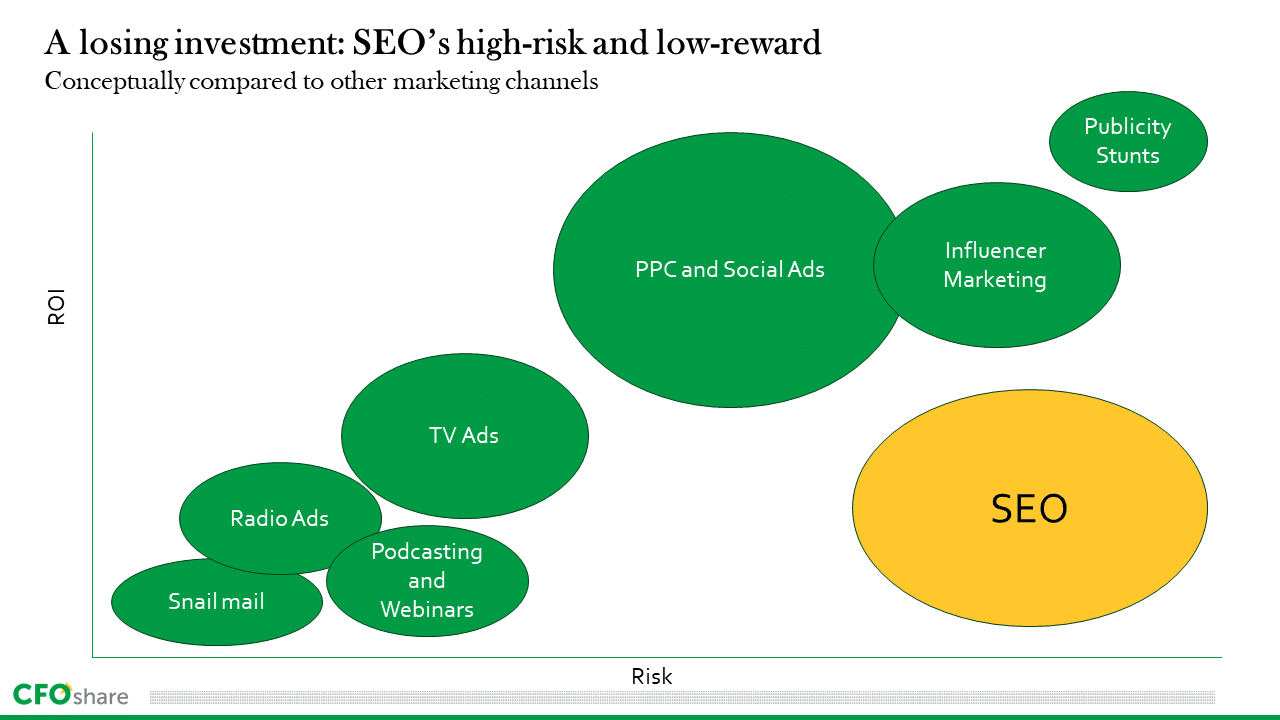We all know we should build a budget – after all, a budget is one of the four essential forecasting tools and a cornerstone of financial planning. But small business owners often put very little effort into annual budgeting or skip the process altogether. Why? Because budgeting for business is difficult. Creating a business budget involves every aspect of your company from HR to marketing to sales and operations. There are no great tools to automate the process, the math is intense, and it often coincides with the busiest time of the year. Yet budgeting does not need to be a struggle. Let’s talk about the best practices that we perform when budgeting at CFOshare so you can apply them to your small business.
Why is a Budget Important?
Budgeting is a planning exercise. Like all great plans, budgeting creates alignment within your team and establishes expectations and roles. For example, a budget sets revenue targets for your sales team and hiring plans for operations so the two groups ramp up in tandem. Budgeting ensures the appropriate resources are available to achieve your goals, such as:
- Sufficient salesforce to close new business
- Adequate marketing budget to hit revenue targets
- Appropriate headcount for operations to deliver on commitments
- Ample cash to support AR, inventory, and growth
Budgeting is more than tallying up income and expenses – it is a process to engage your team in planning the future.
You probably will not stick to your budget. Do not worry, that’s not the point. The purpose of budgeting is to think through your goals, anticipate risk, and plan contingencies. That way you and your team know exactly what to do when facing uncertainty. Budgeting is long and difficult because the process of budgeting is the benefit, not so much the final budget document. This was best summarized by Dwight D. Eisenhauer when he said, “Plans are useless, but planning is indispensable.”
What Should Be Included in a Business Budget?
A business budget should include department-specific financial details including:
- Revenue projections
- By product and/or service
- By market
- By channel or salesperson
- Costs and expenses by department (including detail like rent, utilities, fixed costs, etc.)
- Complete balance sheet projections (assets, liabilities, and equity.)
- Indirect statement of cash flows
- Headcount by department
- Key performance indicators
How to Create a Business Budget
The small business budgeting process for small businesses can be summarized into 6 basic steps:
- Summarize historical data as a baseline.
- Assemble your leadership team and decide on goals for the following year.
- Quantify each department’s plans in a financial model
- Consolidate your departments’ financial budgets to assess for feasibility.
- Negotiate adjustments amongst your departments.
- Present your final budget to key stakeholders.
Summarize Historical Budget Data.
A mentor once told me, “you can have an argument about opinions, or you can have a discussion about data.” We show up to business budget meetings with summarized historical data so we can have productive discussions with each department head about their groups past performance and future plans. The exact right data will depend on your business, but typically includes:
- Monthly profit and loss statements
- Monthly balance sheet statements
- Headcount and salaries by department
- Sales history by product and customer
- Expense history by department
- KPI’s, such as customer acquisition cost, churn rate, or utilization ratios.
Assemble Your Leadership Team to Decide on Goals.
Budgeting is an alignment process. It unifies your team behind a common purpose and gets them working together towards a goal. That means you need to involve your team in the process. Some business owners or CFOs build budgets by themselves and then blame their team for not following the plan. How can they expect their team to understand or buy-into a plan in which they were not included, consented, or solicited for contributions?
Rather than trying to force a plan onto employees like a war general commanding troops, collaborate with your trusted team on the budget, starting with choosing goals for the year. Good company goals for budgeting commonly include:
- Achieve revenue of $X mil.
- Launch project X beta
- Grow our cash position to $X
- Acquire a company to expand our footprint into market X
- Close the sale of our first enterprise customer
- Raise $X mil. in equity funding
- Preserve $X cash for unexpected costs
With company goals agreed upon, each department head should pick 3 to 5 goals for their area that contribute towards the company’s goals. These department goals are the beginning of their individual budgets.
Quantify Each Department’s Plans in a Financial Model.
This is the section that most people think of as “budgeting.” Tally the expenses, revenues, assets, and liabilities each department will need to achieve their goals. This is most easily done by reviewing the historic data, understanding how the next year’s plan will be different than historic performance, and adjusting the figures appropriately. For example, if sales plans to double their revenue next year, they will likely need hire more staff than in the prior year.
Some items are challenging to quantify. For example, how do we project inventory assets? Inventory is typically growing in advance of sales growth, and the exact amount will depend on your business, your supply chain, and your seasonality.
This is the hardest step in creating a business budget and, thus, where owners benefit most from the help of a financial professional. A professional can interview your team, understand their vision, and interpret it into numbers on a spreadsheet.
Consolidate the Departments’ Financial Budgets to Assess for Feasibility.
Once each department has completed its budget, you should compile the numbers into a complete set of financial statements: profit and loss statement, balance sheet, and statement of cash flows. This will allow you to assess the financial feasibility of each department’s plan against the business’ goals. In doing so, you are verifying that the bottom up goals of your departments will achieve the top down goals of the company.
Spoiler alert: business budgets are almost never feasible on the first try. Expenses are usually too high, cash flow is poor, or growth plans are too anemic. So you will move onto the next step…
Negotiate Amongst Your Departments.
Negotiate department plans is the single most important step in the business budgeting process. This is where your team identifies which initiatives are low priority, which are critical, and what support is needed to achieve success.
For example, your team may determine that a marketing hire isn’t useful if the product’s features are not improved, and so a product engineer is a more important use of money.
Try not to let politics, power, or bias drive your negotiations. A budget built on individual egos and win/lose mentality results in a great budget on paper, but poor performance during the year.
Present Your Final Budget to Key Stakeholders.
Circulating your budget will continue to create alignment behind your plan. Share parts or all of your final budget with key stakeholders, which commonly include:
- Board of Directors
- Advisors
- Investors
- Employees
- Suppliers (for product-specific budgets)
- Donors (for not-for-profits)
How to Create a Budget for a New Business.
If you are making a budget for a new business, you are building pro forma financial statements. Pro forma financials are a very special type of financial projection, so check out our article that discusses those special needs.
How Can a Professional Help Small Businesses Budget?
If your organization does not have financial leadership like a CFO, you do not know how to create a business budget, or you are simply too busy to manage the budgeting process, you may consider hiring a financial consultant to help with a budgeting process. This has many benefits, including:
- Maintaining timelines, accountability, and process integrity.
- Eliminating the business owners’ bias by acting as a third-party negotiator.
- Using financial acumen to better quantify plans.
- Identifying risks and contingencies.
- Saving your staff’s time by taking grunt work off their plate.
If you would like a professional consultant to help your business budget, click here to schedule an appointment with our team.




